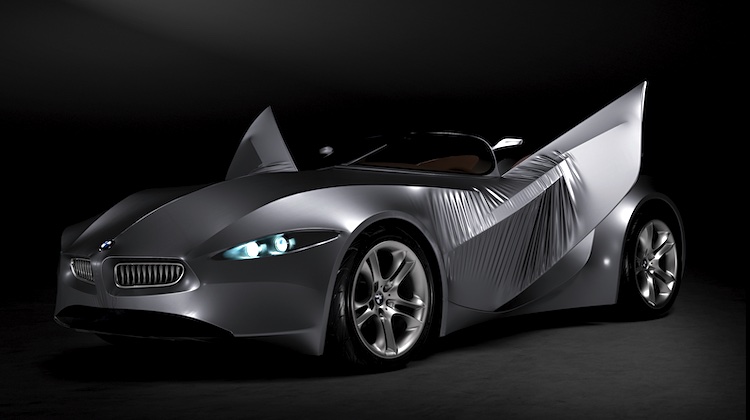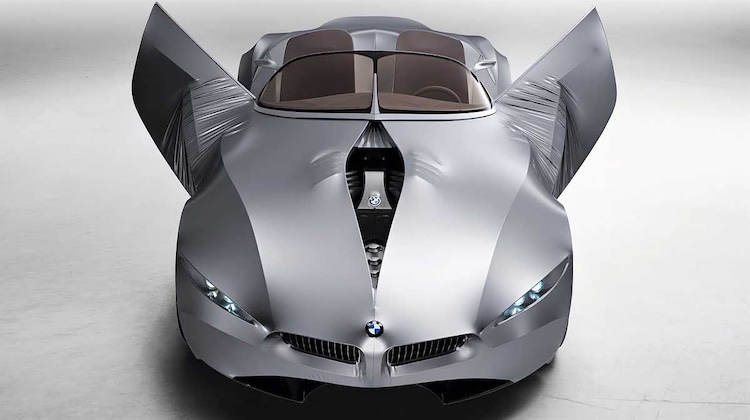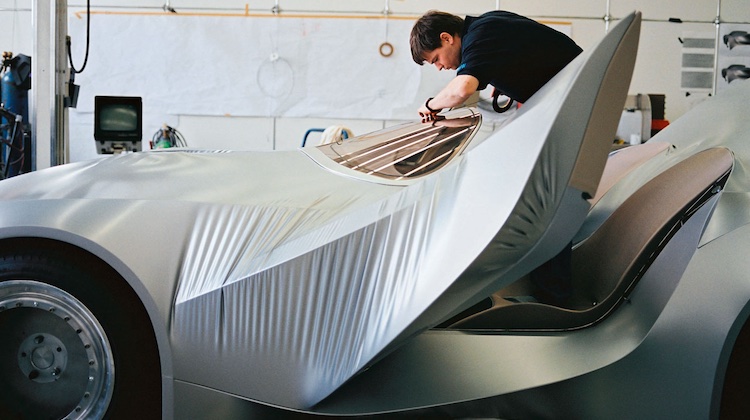
Back in 2008, BMW pulled the cover off one of the strangest, most futuristic concept cars the world had ever seen — except, in this case, the “cover” was the car itself.
Enter the BMW GINA, a shape-shifting roadster draped in fabric skin. Yes, fabric. No paint, no metal panels, just a flexible, almost alien-like membrane stretched over a skeletal frame, capable of changing form on demand. It looked like something out of a sci-fi fever dream, and in a way, it kind of was.
At first glance, GINA (which stands for “Geometry and Functions In ‘N’ Adaptations”) seemed like a design exercise gone off the deep end. But it was actually BMW’s way of questioning everything we thought we knew about car construction. Why should a car’s shape be permanent? Why does it need rigid panels? What if it could adapt to different driving conditions or moods? The GINA was their answer: a car that could literally transform at will.

So, how did the BMW GINA work?
Instead of the usual steel, aluminum or carbon fiber, GINA’s body was covered in a special polyurethane-coated Lycra fabric. It was stretched tightly over a substructure made of aluminum and carbon fiber, which itself was composed of moving components that could shift underneath the skin. This setup allowed the car to morph in ways no traditional vehicle ever could. The headlights didn’t just turn on — they peeled open like a creature waking from a deep sleep. The hood didn’t lift — it split in the middle and unfolded like a pair of wings. Even the side panels could subtly reshape depending on aerodynamics and functionality.
And no, this wasn’t some fragile art piece that would rip if you looked at it wrong. The fabric was highly resistant to heat, water and stretching, making it surprisingly durable. It could handle changes in shape repeatedly without losing its tension or integrity. The material was designed to withstand the elements while still remaining flexible enough to allow for the car’s bizarre, organic movements. BMW never publicly crash-tested it, but one can assume that structural rigidity wasn’t quite on par with a conventional steel-bodied sports car — though, to be fair, the GINA was never meant for production in the first place.
You Have to Watch This Video
Did the BMW GINA ever make it to market?
Absolutely not. This was purely a design and engineering experiment, a radical departure from convention to explore new ideas in vehicle construction. But while the concept itself never rolled onto dealership lots, some of its underlying principles trickled down into BMW’s future designs. You can see hints of the GINA’s adaptive thinking in the way modern BMWs use active aerodynamics, and even in the company’s forays into lightweight materials like carbon fiber-reinforced plastic.
More than anything, GINA was a philosophy. It challenged the notion that cars have to be rigid, static objects. It asked, “What if your car could be more like a living thing?” While the idea of shape-shifting fabric-skinned cars hasn’t taken over the industry, the spirit of the GINA lives on in the push for more adaptive, customizable and even biomimetic vehicle designs.
The GINA was BMW at its most daring — an experiment that, while never meant for the road, still managed to drive the imagination forward.

Was it weird? Absolutely. Was it cool? Without a doubt.
But as amazing as the BMW GINA was, I’m glad it never made it to production — just imagine trying to pattern, stitch and fit a car’s entire body. I’d much rather leave that for the next generation of trimmers.
Recent Comments